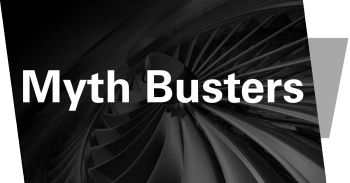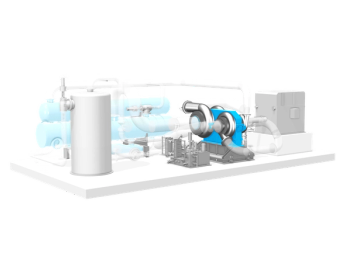
- July/August 2023
- Volume 64
- Issue 4
Turbo Tips: Commissioning Turbomachinery
The four phases of commissioning are important developmental stages for any turbomachinery package.
Commissioning is a set of tests, checks, and activities to convert a newly installed package to a full-capacity commercial operation. Commissioning is performed in four phases:
1. Pre-commissioning
2. Core commissioning
3. Start-up
4. Post commissioning
Pre-commissioning is a thorough site inspection that includes verifying design conformity, the status of electrical, mechanical, and instrument installations, running-in of equipment, flushing, cleaning, drying, etc.
Pre-commissioning activities usually start when mechanical completion is achieved. Frequently, however, these two activities overlap. For example, a package can be under pre-commissioning while neighboring units are still under construction. For this reason, a facility can be separated into easily manageable pre-commissioning entities.
PREPARATION AND EXECUTION
Create a pre-commissioning checklist to track the comprehensive site inspection and pending items. Bolts and similar tightening parts should be tightened as required. (This is a common pending item.) Wiring in general and electrical/instrument wiring connections require a lot of attention. All switches, instruments, indicators, and other instruments and devices should be properly installed and prepared to be qualified for further stages, such as a loop test. Grounding is often missed, but this is an important step. Be sure the grounding status of all machinery and equipment is checked—the ground resistance should also be measured and verified. All tubing and networks of piping, conduits, etc., should be checked and verified, e.g., centralized lubricating systems. There should be no leakage, deformation, or damage, and the entire network should be complete and working properly. There should be no blockage as well.
Planning is the key to success in commissioning. Proper planning and sequencing of different construction, completion, pre-commissioning, and commissioning tasks for different units and packages are extremely important to transition from the erection and installation phase to operation. As part of the planning stage, an estimated number of laborers, technicians, and supervisors should be provided for each stage of the commissioning. As a part of pre-commissioning, most flushing, cleaning, etc., is implemented in the shop before delivering the turbomachinery to the job site.
SAFETY, DOCUMENTATION, AND RECORDS
Safety precautions are important in commissioning. Proper risk assessments should be done before any pre-commissioning and commissioning steps. There are many different risks and hazards in many commissioning tasks and activities, such as the risk of fire. Therefore, fire systems should be commissioned before any risky tasks are started, and/or temporary firefighting equipment should be provided.
Issues in previous stages, such as design, construction, etc., often surface during commissioning. A set of deviations may be necessary to facilitate the commissioning. However, there should be no deviations on matters related to safety, reliability, or operational flexibility.
Each phase of commissioning requires a dedicated form—inspections should be supported by the appropriate record/form, and proper forms/reports should be completed and signed upon completion of each stage of commissioning. All measured data from the commissioning stage should be recorded as well as the various technical parameters and measurements.
TROUBLESHOOTING
Troubleshooting is a major task in the commissioning. Complete troubleshooting guides should be prepared in advance for every machine, piece of equipment, or device in the plant to help identify and correct any malfunctions that may occur.
CHECKS AND INSPECTIONS
All required items, lubrications, chemicals, tools, spare parts, and bits and pieces for commissioning should be ready in advance. Further, the quantity and grade of lubrication oil should fit the turbomachinery. The incorrect types and grades of oil were frequently used in different machines in previous commissioning exercises, which caused difficulties during this phase, so ensuring the correct oil is being used is critical. Additionally, all required operational data should be supplied in advance, such as alarm descriptions, alarm set points, initial settings for commissioning, etc.
Handover is another critical task that requires details for each handover, as there are different types. For example, the handover from the construction team to the commissioning team—this is the official start of pre-commissioning. Another example is the handover from commissioning to operation.
And finally, a thorough visual inspection should be conducted to ensure there are no defects, obvious deformations, cracks, weld-joint problems, loose bolt connections, etc. The various modes of operation—starting and stopping, full range of part-load, emergency trips, etc.—should be conducted on each turbomachine. All limit devices, sensors, instruments, etc., should be checked for sensitivity and reliability. Also, safety and limiting systems such as brakes should be checked. An electric motor solo test should be done for all onsite motors to verify the motor’s operational characteristics such as vibration, temperature, noise, etc.
Amin Almasi is a Chartered Professional Engineer in Australia and the U.K.(M.Sc. and B.Sc. in mechanical engineering). He is a senior consultant specializing in rotating equipment, condition monitoring and reliability.
Articles in this issue
about 2 years ago
Myth Busters: Dual Drives Always Work Better!about 2 years ago
Gas Turbine Sales Surged in 2022about 2 years ago
Case Study: Maintenance Tips for Magnetic Drive Pumpsover 2 years ago
Turbo Tour: RMS: A Multi-OEM Repair & Maintenance Shopover 2 years ago
Repair & Maintenance Trends Necessitate Tech Innovationsover 2 years ago
The Future of Hydrogen as a Gas Turbine FuelNewsletter
Power your knowledge with the latest in turbine technology, engineering advances, and energy solutions—subscribe to Turbomachinery International today.





